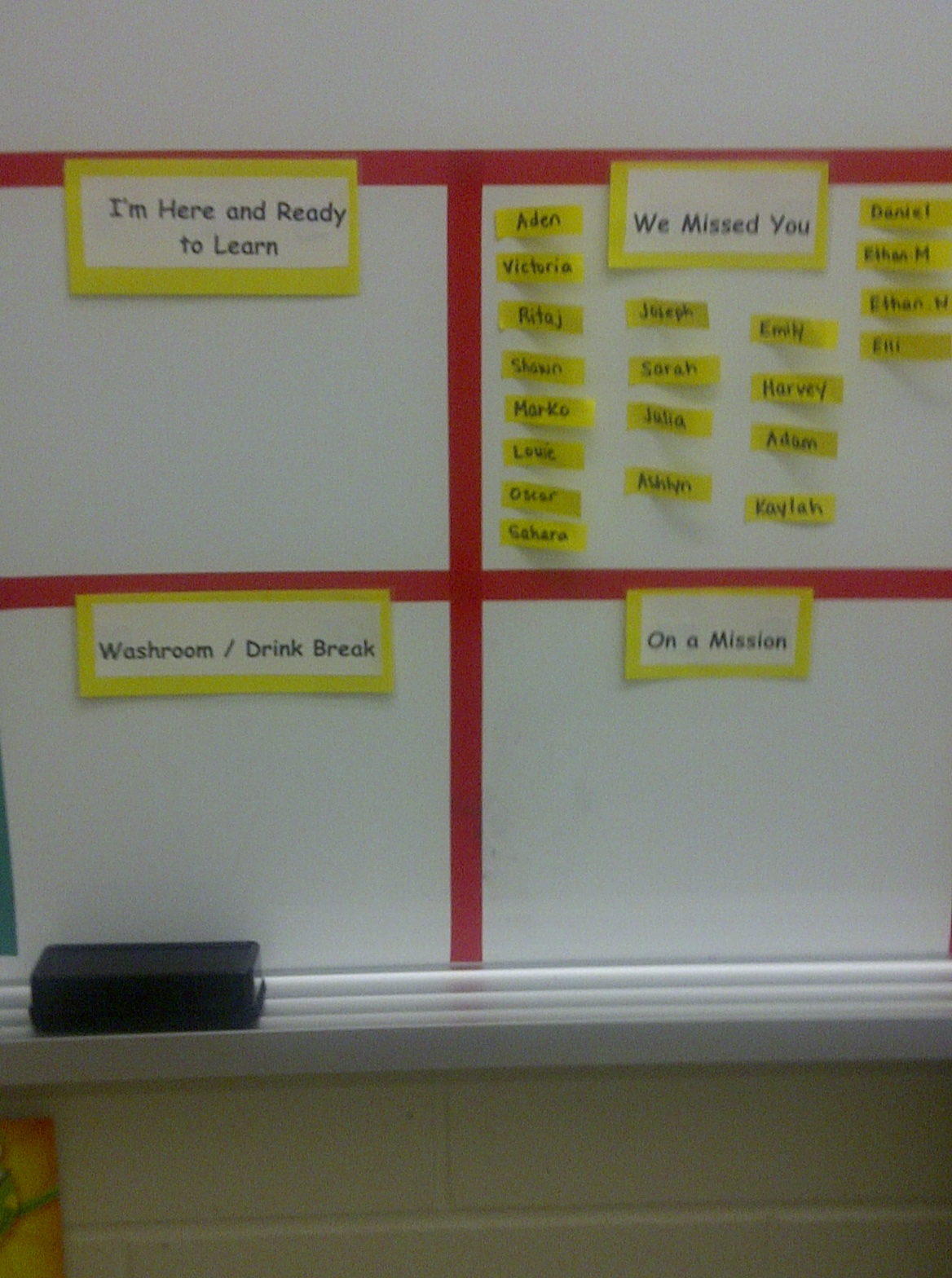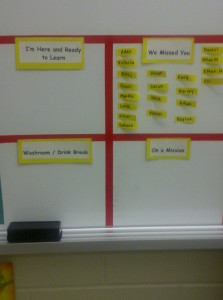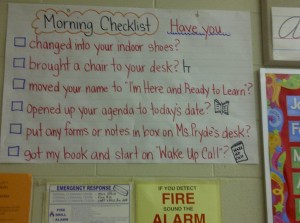Out of all the challenges you are confronted with as a teacher, it seems to me that one of the most difficult of all is making sure that you can meet the needs of all of your students (simultaneously!). Everything else seems to hinge on this; if your students can function/are sufficiently challenged, they are engaged. If they are engaged, they are motivated and will not cause problems in class. Seems like once you can identify the root problem, implementing a solution is easy…As we all know, this is seldom the case. Core French being a second/third language makes it that much more challenging. In essence, EVERYONE is needy and that much more dependent on the teacher. It can be exhausting and difficult to be pulled in so many directions. See if this sounds familiar (keep in mind, the key word is once again “simultaneously”).
Do you have your project with you today?
What project?
The one we worked on together yesterday? I had given you sentence starters and we spent 20 minutes working on key vocabulary?
No, I lost it.
(Great) Well, start it aga…(interrupted)
I can’t find my sheet!/He stole my pencil and won’t give it back!/How do you say “is” in French?/If I write double the sentences, do I get a level 4?
So on and so on. No matter how much experience you have (and I have a lot), it is still a difficult task that can leave you feeling overwhelmed. This year, I’m trying out a different approach with my grade seven class with the following scenario: 33 kids in a small space (not my classroom), 4 gifted, 3 on IEPs and 2 HSP students with identified learning disabilities. Already seated in groups of four, I have them now sitting with at least 1 “expert” per group. They are those students who are not only high functioning but are also good communicators. Their job is to make sure that everyone in their group is following along and if they are having difficulties of any kind, they are the “go to” people. I am hoping this will allow me to circulate more and really help those in need (for remediation or enrichment) in a focused way.







